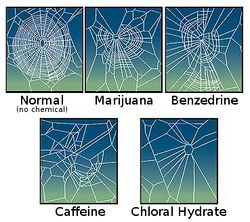| Display title | Biology:Effect of psychoactive drugs on animals |
| Default sort key | Effect of psychoactive drugs on animals |
| Page length (in bytes) | 27,301 |
| Namespace ID | 3026 |
| Namespace | Biology |
| Page ID | 876482 |
| Page content language | en - English |
| Page content model | wikitext |
| Indexing by robots | Allowed |
| Number of redirects to this page | 0 |
| Counted as a content page | Yes |
| Page image |  |
| HandWiki item ID | None |
| Edit | Allow all users (infinite) |
| Move | Allow all users (infinite) |
| Page creator | imported>Unex |
| Date of page creation | 10:24, 9 March 2024 |
| Latest editor | imported>Unex |
| Date of latest edit | 10:24, 9 March 2024 |
| Total number of edits | 1 |
| Recent number of edits (within past 90 days) | 0 |
| Recent number of distinct authors | 0 |
Description | Content |
Article description: (description)
This attribute controls the content of the description and og:description elements. | Psychoactive drugs, such as caffeine, amphetamine, mescaline, lysergic acid diethylamide (LSD), cannabis, chloral hydrate, theophylline, IBMX and others, can have strong effects on certain animals. It is believed that plants developed caffeine as a chemical defense against insects. |

